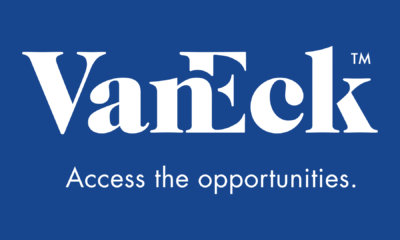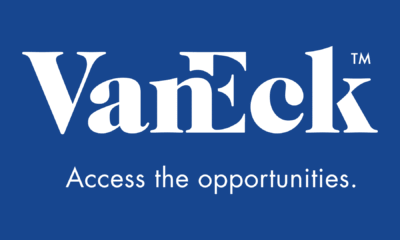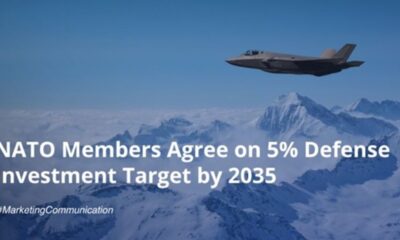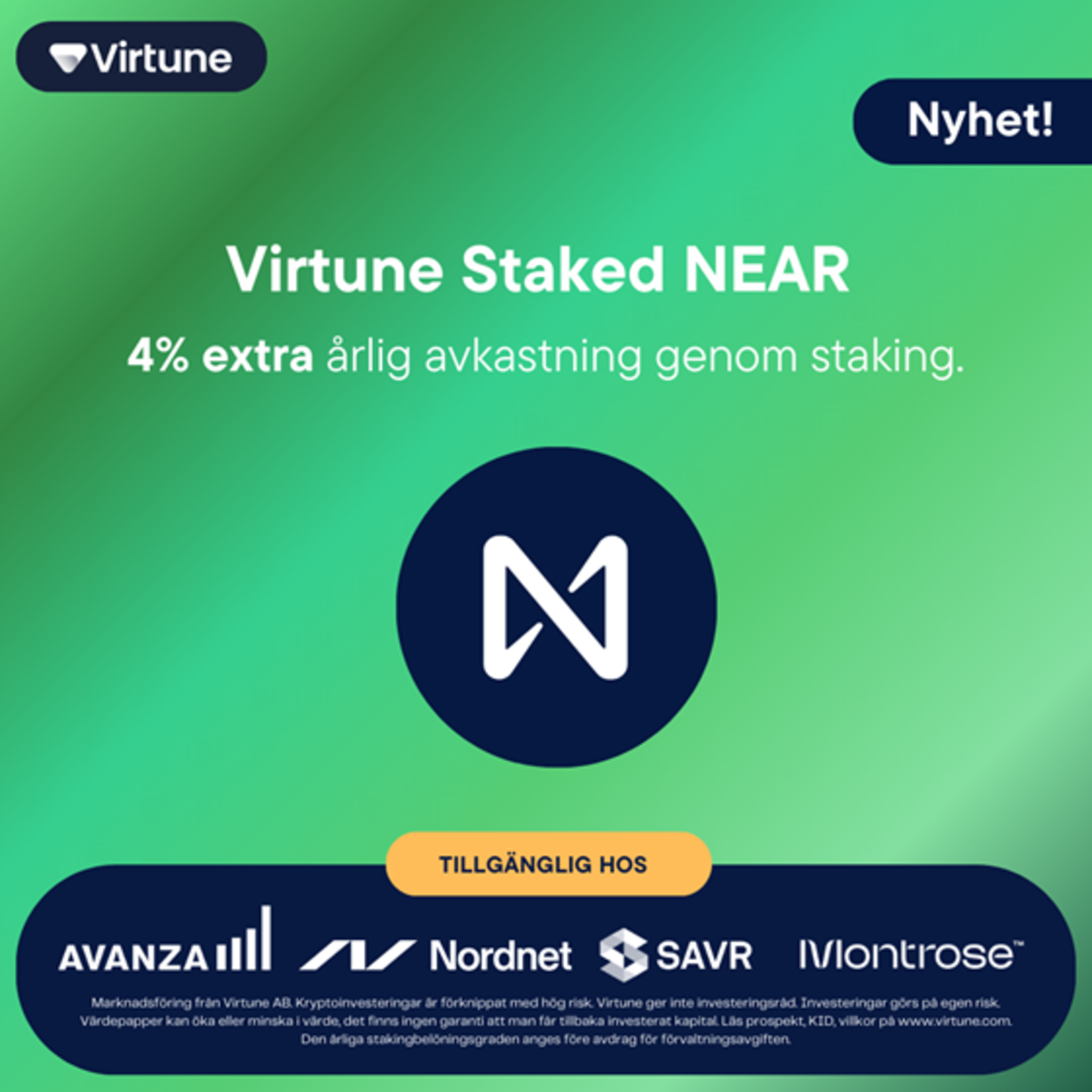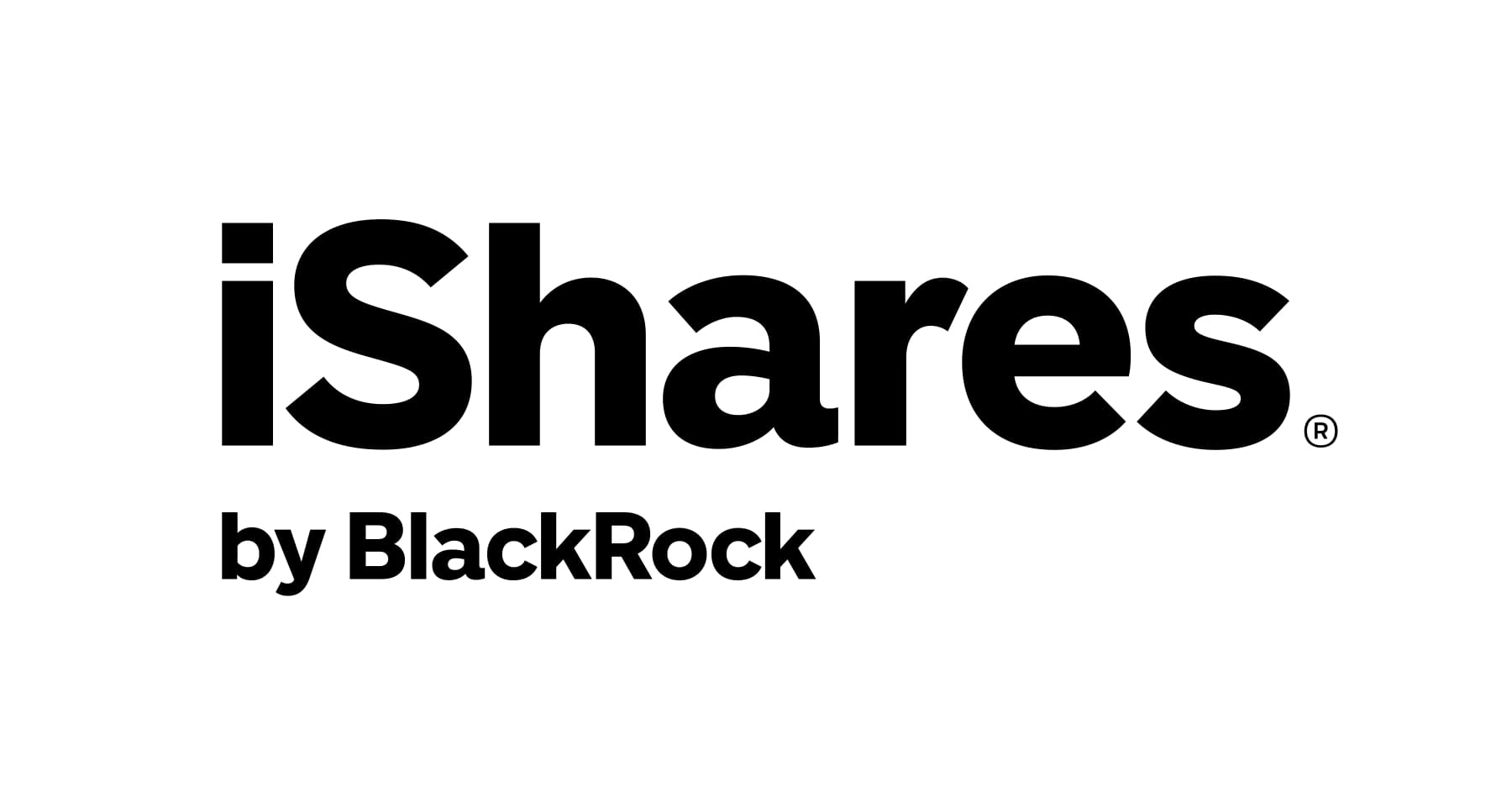It’s fair to say that most market participants were left disoriented after April’s economic rollercoaster. The month began with the announcement of a 10% “universal” tariff on April 2—an announcement that proved to be anything but universal. Canada and Mexico were excluded, certain sectors and products were exempt, and over 50 countries were instead hit with additional “reciprocal” tariffs ranging from 11% to 50%.
Just days later, confusion deepened when those same reciprocal tariffs were suspended—except for China, where cumulative tariffs reached an effective rate of 145%. Countries across the world scrambled to craft retaliation measures while financial markets struggled to price in the flurry of conflicting announcements on an hour-by-hour basis.
Gold: From Panic to Safe Haven
Gold and gold stocks were swept up in the turmoil during the first volatile week of April. Margin calls, investor panic, broad selling pressure, and a rush to raise cash pushed gold below the $3,000 mark, hitting a monthly low of $2,983.27 on April 8.
However, gold’s safe haven status was soon reaffirmed, rising to new highs throughout the month and trading intraday as high as $3,500 per ounce on April 22.
While other asset classes also began to recover as the month progressed, gold stood out—rising 5.29% in April.
By comparison, the S&P 500 (1) fell 0.68%, the U.S. dollar declined 4.55%, and the Nasdaq2 eked out a modest (but notable) 0.88% gain. Even U.S. Treasuries experienced early selling pressure, with the 10-year yield briefly spiking to 4.5% on April 11 before settling at 4.2% by month-end. Gold ultimately closed April at $3,288.71 per ounce.
Gold Miners: A Tale of Two Halves
Gold miners, as represented by the NYSE Arca Gold Miners Index (GDMNTR)3, performed exceptionally well in the first half of the month, outpacing both the metal and broader asset classes. As equity markets rebounded in the latter half, however, investor enthusiasm for gold cooled, and miners lagged.
The month also highlighted the strong correlation between western investment flows and gold pricing. Inflows into global gold bullion ETFs early in April coincided with gold’s rally, while outflows during the final seven trading days contributed to downward price pressure. Still, gold equities—up 6.94% in March—achieved their goal of outperforming bullion and offered effective protection during April’s turbulence.
A Missed Opportunity for Most Investors
With only about 1% of global assets under management currently allocated to the gold sector, it’s clear that the vast majority of investors have missed out on gold’s exceptional performance this year. When we speak with those who are now starting to pay attention, our conversations typically revolve around two key questions:
• Am I too late?
• How much gold should I own in my portfolio?
On the first point, many investors see gold’s 25% surge this year—on top of a 27% gain in 2024—and assume the rally must be nearing its end. Interestingly, these same investors have been actively participating in equity markets that have risen nearly every year for the past 16 years.
Why Gold Still Has Room to Run
The S&P 500 has posted annual gains nearly every year since the 2008 financial crisis—except for 2015, 2018, and 2022—and is up 53% just since the start of 2022. Yet even after the market turmoil of April and an increasingly uncertain outlook, most investors remain hesitant to reduce their equity exposure or reallocate capital.
Gold, by contrast, has seen far less participation. Investment demand remains well below prior peaks. Given the strength of gold’s recent rally, a short-term pullback is neither unexpected nor concerning. In fact, we believe gold is in the process of forming a new, higher base—likely around $3,000 per ounce.
When investors return to gold in a meaningful way—and we believe the case for doing so is growing—the combined force of renewed investment flows and continued strong central bank buying could drive prices significantly higher. Based on historical correlations between ETF holdings and the gold price, a return to 2020 peak ETF levels could translate to an additional $600 per ounce increase.
In our view, it’s not too late to begin building or adding to a position in gold or gold equities.
If your portfolio currently has no gold exposure, now is an ideal time to start.
In today’s environment, having zero allocation to gold is increasingly difficult to justify.
How Much Gold Should You Own?
On the second point—how much gold exposure should I have?—we believe gold should be treated as a core, long-term component of a well-diversified portfolio. A strategic allocation of around 5% is a reasonable starting point for most investors. We do not recommend trading in and out of this core position.
A more tactical approach to complement a core allocation could involve adjusting the size of the position based on macroeconomic trends, as well as determining the appropriate mix between gold bullion and gold miners.
While initial interest in gold often leads investors to start with bullion, we believe gold equities also deserve consideration. Their risk profile may lead to different allocation choices depending on the investor, but they offer leveraged exposure to the gold price—an opportunity every investor should evaluate.
Finally, we recommend taking a basket approach when investing in gold equities. Consistently picking the top performers year after year is difficult, which makes diversification essential in this sector.
To receive more Gold Investing insights, sign up in our subscription center.
Article written by Imaru Casanova
Important Disclosures
All company, sector, and sub-industry weightings as of April 30, 2025, unless otherwise noted.
Please note that VanEck may offer investment products that invest in the asset class(es) or industries included in this communication.
This is not an offer to buy or sell, or a solicitation of any offer to buy or sell any of the securities mentioned herein. The information presented does not involve the rendering of personalized investment, financial, legal, or tax advice. Certain statements contained herein may constitute projections, forecasts and other forward-looking statements, which do not reflect actual results.
Please note that the information herein represents the opinion of the author, but not necessarily those of VanEck, and this opinion may change at any time and from time to time. Non-VanEck proprietary information contained herein has been obtained from sources believed to be reliable but not guaranteed. Not intended to be a forecast of future events, a guarantee of future results or investment advice. Historical performance is not indicative of future results. Current data may differ from data quoted. Any graphs shown herein are for illustrative purposes only. No part of this material may be reproduced in any form, or referred to in any other publication, without express written permission of VanEck.
Diversification does not assure a profit or protect against loss.
Nothing in this content should be considered a solicitation to buy or an offer to sell shares of any investment in any jurisdiction where the offer or solicitation would be unlawful under the securities laws of such jurisdiction, nor is it intended as investment, tax, financial, or legal advice. Investors should seek such professional advice for their particular situation and jurisdiction.
1 S&P 500 Index is widely regarded as the best single gauge of large-cap U.S. equities. The index is a float-adjusted, market-cap-weighted index of 500 leading U.S. companies from across all market sectors including information technology, telecommunications services, utilities, energy, materials, industrials, real estate, financials, health care, consumer discretionary, and consumer staples. 2NASDAQ Composite Index is a broad-based market index that includes more than 3700 stocks listed on the Nasdaq stock exchange. 3NYSE Arca Gold Miners Index (GDMNTR) is a modified market capitalization-weighted index comprised of publicly traded companies involved primarily in the mining for gold.
Any indices listed are unmanaged indices and include the reinvestment of all dividends, but do not reflect the payment of transaction costs, advisory fees or expenses that are associated with an investment in a Fund. Certain indices may take into account withholding taxes. An index’s performance is not illustrative of a Fund’s performance. Indices are not securities in which investments can be made.
Investments in commodities can be very volatile and direct investment in these markets can be very risky, especially for inexperienced investors.
NYSE Arca Gold Miners Index is a service mark of ICE Data Indices, LLC or its affiliates (“ICE Data”) and has been licensed for use by Van Eck Associates Corporation (“VanEck”). VanEck products are not sponsored, endorsed, sold or promoted by ICE Data. ICE Data makes no representations or warranties regarding VanEck products or the ability of the NYSE Arca Gold Miners Index to track general stock market performance.
ICE DATA MAKES NO EXPRESS OR IMPLIED WARRANTIES, AND HEREBY EXPRESSLY DISCLAIMS ALL WARRANTIES OF MERCHANTABILITY OR FITNESS FOR A PARTICULAR PURPOSE WITH RESPECT TO THE NYSE ARCA GOLD MINERS INDEX OR ANY DATA INCLUDED THEREIN. IN NO EVENT SHALL ICE DATA HAVE ANY LIABILITY FOR ANY SPECIAL, PUNITIVE, INDIRECT, OR CONSEQUENTIAL DAMAGES (INCLUDING LOST PROFITS), EVEN IF NOTIFIED OF THE POSSIBILITY OF SUCH DAMAGES.
The S&P 500® Index is a product of S&P Dow Jones Indices LLC and/or its affiliates and has been licensed for use by Van Eck Associates Corporation. Copyright © 2025 S&P Dow Jones Indices LLC, a division of S&P Global, Inc., and/or its affiliates. All rights reserved. Redistribution or reproduction in whole or in part are prohibited without written permission of S&P Dow Jones Indices LLC. For more information on any of S&P Dow Jones Indices LLC’s indices please visit www.spglobal.com/spdji/en/. S&P® is a registered trademark of S&P Global and Dow Jones® is a registered trademark of Dow Jones Trademark Holdings LLC. Neither S&P Dow Jones Indices LLC, Dow Jones Trademark Holdings LLC, their affiliates nor their third party licensors make any representation or warranty, express or implied, as to the ability of any index to accurately represent the asset class or market sector that it purports to represent and neither S&P Dow Jones Indices LLC, Dow Jones Trademark Holdings LLC, their affiliates nor their third party licensors shall have any liability for any errors, omissions, or interruptions of any index or the data included therein.
Gold investments are subject to the risks associated with concentrating its assets in the gold industry, which can be significantly affected by international economic, monetary and political developments. Investments in gold may decline in value due to developments specific to the gold industry. Foreign gold security investments involve risks related to adverse political and economic developments unique to a country or a region, currency fluctuations or controls, and the possibility of arbitrary action by foreign governments, or political, economic or social instability. Gold investments are subject to risks associated with investments in U.S. and non-U.S. issuers, commodities and commodity-linked derivatives, commodities and commodity-linked derivatives tax, gold-mining industry, derivatives, emerging market securities, foreign currency transactions, foreign securities, other investment companies, management, market, non-diversification, operational, regulatory, small- and medium-capitalization companies and subsidiary risks.
All investing is subject to risk, including the possible loss of the money you invest. As with any investment strategy, there is no guarantee that investment objectives will be met and investors may lose money. Diversification does not ensure a profit or protect against a loss in a declining market. Past performance is no guarantee of future performance.
© Van Eck Associates Corporation.

 Nyheter4 veckor sedan
Nyheter4 veckor sedan
 Nyheter4 veckor sedan
Nyheter4 veckor sedan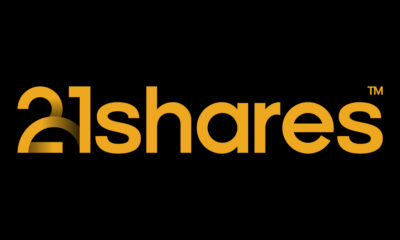
 Nyheter4 veckor sedan
Nyheter4 veckor sedan
 Nyheter4 veckor sedan
Nyheter4 veckor sedan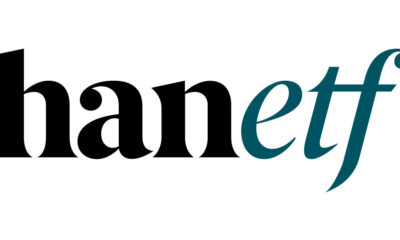
 Nyheter2 veckor sedan
Nyheter2 veckor sedan
 Nyheter4 veckor sedan
Nyheter4 veckor sedan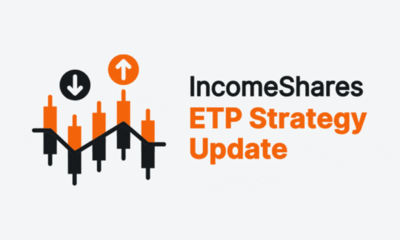
 Nyheter4 veckor sedan
Nyheter4 veckor sedan
 Nyheter4 veckor sedan
Nyheter4 veckor sedan


